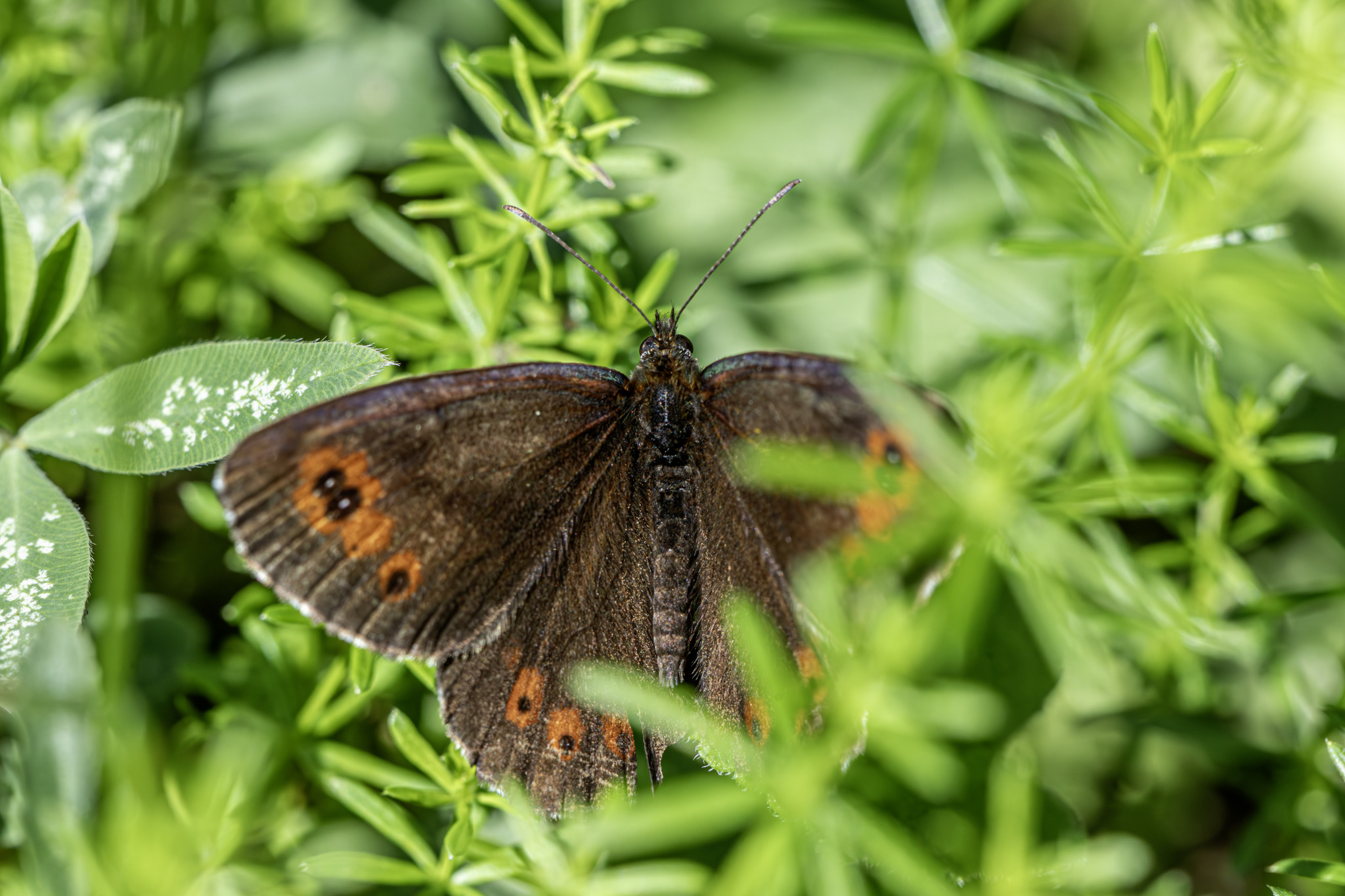The Large Ringlet (Erebia euryale) is a species of butterfly belonging to the subfamily Satyrinae in the family Nymphalidae. Known for its distinctive appearance and alpine habitat, the Large Ringlet is a fascinating species. Here are some key details about this butterfly:
Appearance
- Size: The wingspan of the Large Ringlet typically ranges from 42 to 52 mm (1.6 to 2 inches).
- Coloration: The upper side of the wings is dark brown with prominent reddish-orange bands that contain black eyespots, each with a white pupil. The number and arrangement of these eyespots can vary.
- Underside: The underside of the forewings mirrors the upperside but with more muted colors, while the hindwings are greyish-brown with wavy, darker lines and smaller eyespots, providing camouflage against the ground.
Habitat
- Range: Erebia euryale is found in the mountainous regions of Europe, including the Alps, Pyrenees, Carpathians, and the Balkans.
- Environment: This species prefers alpine meadows, grassy slopes, and open woodlands at elevations between 800 and 2,500 meters (2,600 to 8,200 feet). They are often seen in areas with abundant grass and flowering plants.
Behavior
- Feeding: Adults primarily feed on nectar from a variety of alpine flowers. Common nectar sources include thistles, knapweeds, and other composites.
- Flight: The Large Ringlet has a slow and fluttering flight pattern. They are most active on sunny days, basking with wings open to absorb heat.
- Activity Period: They are typically active from June to August, depending on altitude and local climate conditions.
Life Cycle
- Eggs: Females lay their eggs singly on grass blades or near the base of host plants.
- Larvae: The caterpillars are green with faint longitudinal stripes, resembling blades of grass. They feed on various grass species, including fescues and bents.
- Pupation: Pupation occurs in a loose cocoon among grass tussocks or leaf litter. The pupal stage lasts for a few weeks.
- Adults: Adults emerge in early summer and have a relatively short lifespan, focusing on feeding and reproduction.
Adaptations
- Camouflage: The mottled brown underside of the wings provides excellent camouflage against the ground, protecting them from predators when at rest.
- Thermoregulation: Dark coloration on the wings helps with thermoregulation, allowing the butterfly to absorb heat from the sun and remain active in cooler alpine climates.
Ecological Role
- Pollination: As nectar feeders, Large Ringlets play a role in pollinating alpine flowers, contributing to the health and diversity of their ecosystems.
- Prey: They serve as prey for birds, spiders, and other predators, playing a role in the alpine food web.
Conservation
- Status: The Large Ringlet is not currently considered endangered. However, habitat loss due to climate change, agricultural practices, and tourism development can impact local populations.
- Conservation Efforts: Protecting alpine habitats and promoting sustainable land use practices are essential for the conservation of this species. Efforts to maintain the natural vegetation and minimize habitat fragmentation are also beneficial.
Interesting Facts
- Variability: The appearance of Large Ringlet butterflies can vary significantly between populations, with differences in the size and number of eyespots and the intensity of the reddish bands.
- Alpine Specialist: This species is well-adapted to life in the mountains, thriving in environments that are often too harsh for many other butterfly species.
The Large Ringlet (Erebia euryale) is a beautiful and resilient butterfly species, adapted to the challenging conditions of alpine habitats. Conservation of their natural environments is crucial for ensuring their continued presence in these unique ecosystems.
Visited 874 times, 2 visit(s) today
Views: 1273
Subscribe to the newsletter:
